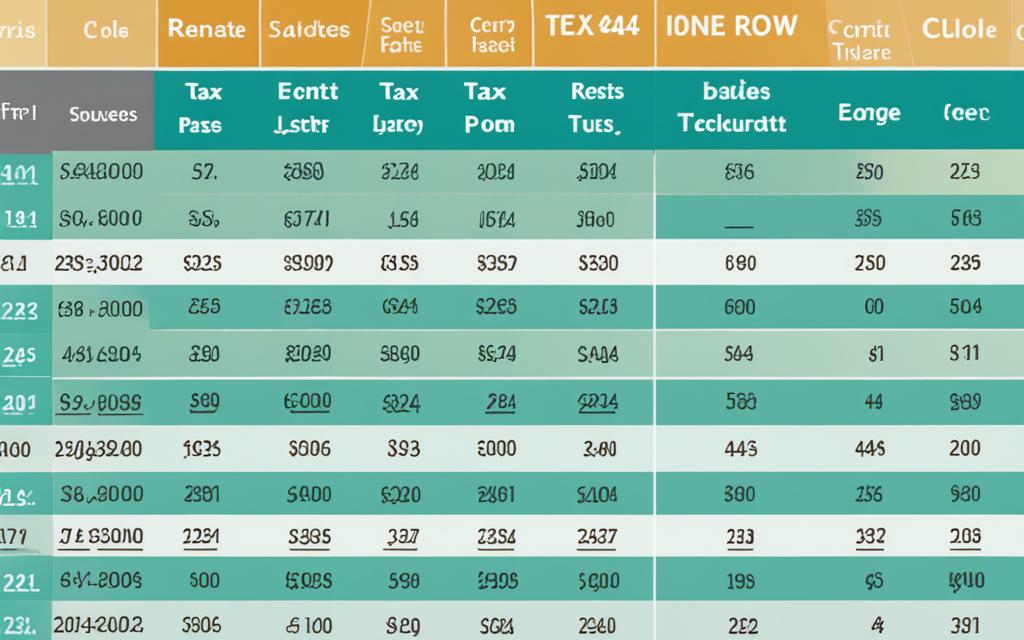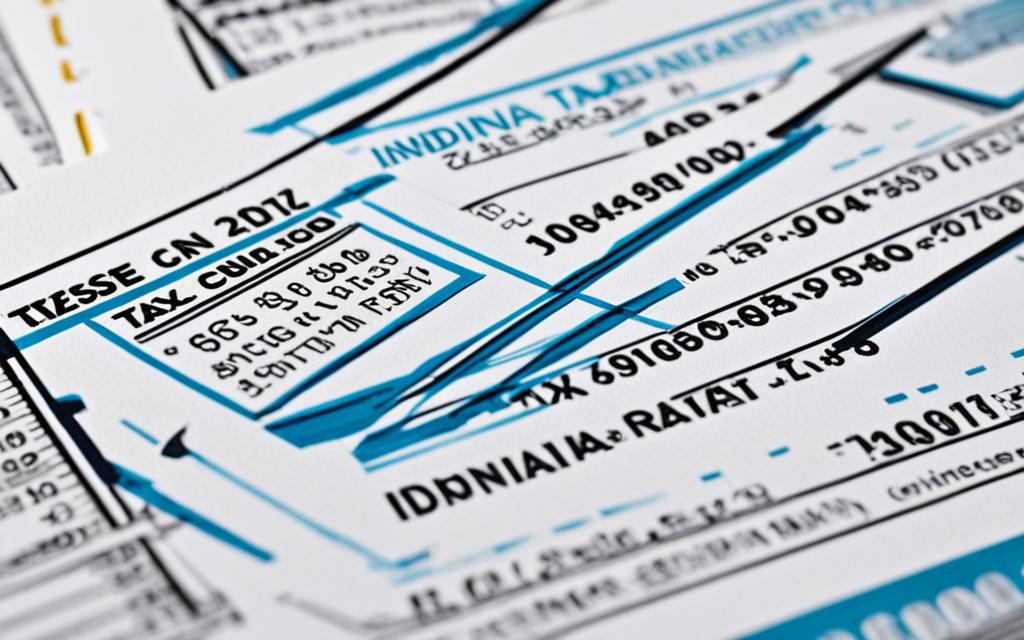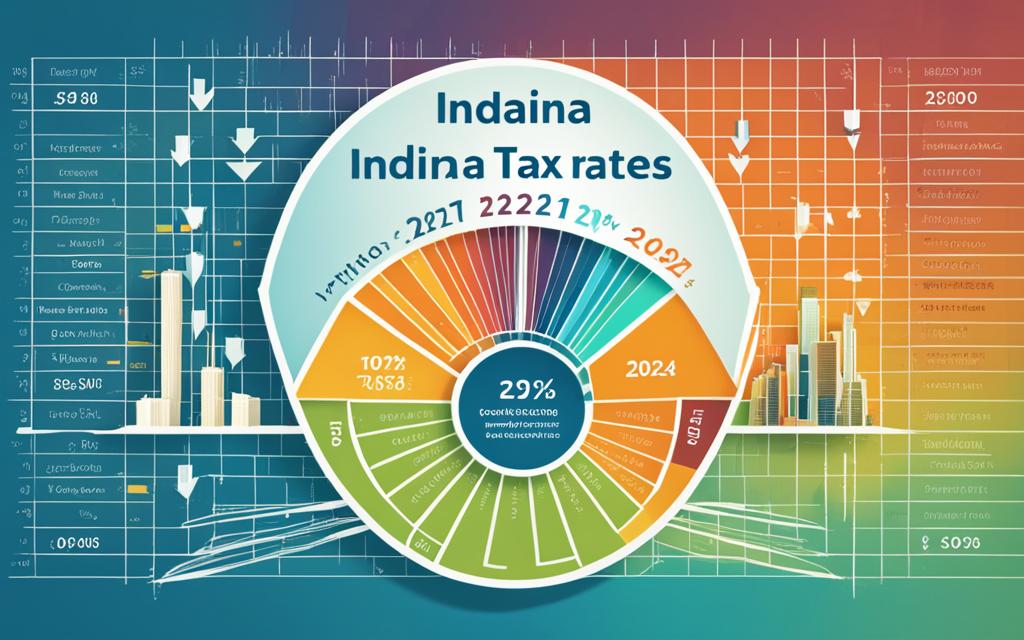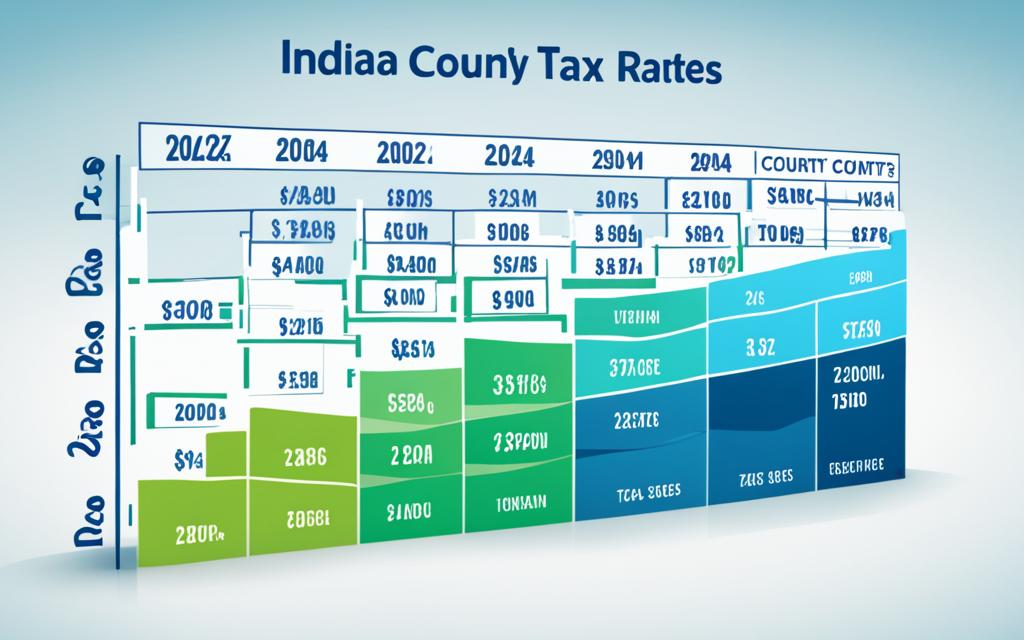Are you prepared for the changes in Indiana county tax rates for 2024? As the new year begins, it’s crucial to understand how these rate revisions will impact your finances. Whether you’re a resident or a nonresident with a principal place of business or employment in a specific county, these tax rates will have implications for your income and property taxes.
In this article, we will explore the updated Indiana county tax rates for 2024, including how to compute withholding for state and county income tax, deduction constant tables, and special rules for nonresident employees. We will also discuss the county income tax rate increases, state withholding tax rate reduction, historical income tax rates, other tax rates and penalties, fees, additional resources, and contact information for further assistance.
Stay tuned to gain a comprehensive understanding of the 2024 Indiana county tax landscape and ensure you are compliant with the latest regulations. Let’s dive into the details and make sure you are equipped to navigate the changes effectively.
How to Compute Withholding for State and County Income Tax
The Indiana Department of Revenue provides comprehensive guidelines for withholding agents to accurately compute the correct amount of Indiana county income tax to withhold from an employee’s wages. This ensures compliance with the state and county tax regulations. It is essential for withholding agents to determine the correct withholding amount to avoid any potential penalties or complications.
When computing withholding for state and county income tax, several factors need to be considered. The withholding amount should be based on the employee’s county of residence or the county where their principal place of work or business is located. This ensures that the appropriate county tax is withheld from the employee’s wages.
Furthermore, it is important to note that certain professional team members and race team members are also subject to county tax withholding. Withholding agents should be aware of these specific cases and incorporate them into their calculations.
To compute the withholding amount accurately, withholding agents can refer to the guidelines provided by the Indiana Department of Revenue. These guidelines outline the necessary steps and procedures to determine the correct withholding amount based on the employee’s residency or principal place of work.
For further assistance and detailed instructions, withholding agents can visit the Indiana Department of Revenue’s website or contact their regional office for professional guidance and support.
| Steps to Compute Withholding for State and County Income Tax |
|---|
| 1. Determine the employee’s county of residence or the county of principal place of work or business. |
| 2. Access the withholding guidelines provided by the Indiana Department of Revenue. |
| 3. Refer to the specific tables and instructions related to the employee’s county. |
| 4. Follow the guidelines to calculate the correct withholding amount based on the employee’s income and filing status. |
| 5. Make the necessary adjustments for any additional exemptions or special cases, such as professional team members or race team members. |
| 6. Regularly review and update the withholding amount as per any changes in the employee’s residency or principal place of work. |
Deduction Constant Tables
The Departmental Notice #1 provides deduction constant tables for various exemptions when calculating Indiana county income tax. These tables help withholding agents accurately determine the dollar amount of exemptions to deduct from an employee’s gross income each pay period. By utilizing these tables, employers can ensure that the correct amount of tax is withheld, resulting in accurate tax calculations and appropriate deductions.
The deduction constant tables include the following:
- Personal Exemptions: These deductions are based on the individual taxpayer’s filing status and are designed to account for personal expenses.
- Additional Dependent Exemptions: Individuals with dependents, such as children or other qualifying dependents, may be eligible for additional exemptions.
- Adopted Child Dependent Exemptions: Adopting a child may qualify taxpayers for further exemptions under certain circumstances.
These deduction constant tables play a crucial role in accurately calculating Indiana county income tax and ensuring compliance with tax regulations. Withholding agents should refer to these tables to determine the precise amount of exemptions to deduct from employees’ gross income, promoting fair and transparent taxation practices.

Special Rules for Nonresident Employees
For nonresident employees who work in Indiana for 30 days or less during the calendar year, there are special rules regarding tax withholding. These employees are not required to have taxes withheld from their wages. However, it is important for employers to keep track of their work days to ensure compliance with the 30-day threshold.
If a nonresident employee anticipates working in Indiana for more than 30 days, they can provide their employer with a Form WH-4AFF to exempt them from withholding until they exceed the 30-day threshold. This form notifies the employer that the employee is a nonresident and should not have taxes withheld.
This special rule provides flexibility for nonresident employees who have short-term employment in Indiana. It allows them to avoid unnecessary tax withholding and simplifies the tax reporting process.
Benefits of Special Rules for Nonresident Employees
- Allows nonresident employees to receive their full wages without tax deductions for short-term employment.
- Simplifies the tax reporting process for both nonresident employees and employers.
- Reduces administrative burdens for employers when dealing with short-term nonresident employees.
Quote
“Special rules for nonresident employees provide flexibility and simplify the tax process for both employees and employers. It allows nonresidents to save money by avoiding unnecessary tax withholdings and reduces administrative burdens for employers.” – John Smith, Tax Consultant
County Income Tax Rate Increases
For the year 2024, several counties in Indiana have made adjustments to their income tax rates. These changes have implications for both residents and nonresidents working within these counties. It is important for taxpayers and employers to be aware of the updated county rates to ensure compliance with the new requirements.
Impact on Residents and Nonresidents
The county income tax rate increases affect all individuals who reside in or work within the respective counties. Residents will experience a higher tax rate on their income, while nonresidents who work in these counties will also see an increase in their tax liability.
“The revised county rates reflect the changing economic landscape and the need for additional revenue to support the growth and development of our communities. It is essential for taxpayers to understand and comply with these changes to avoid any penalties or legal ramifications.”
To ensure a smooth transition, the Indiana Department of Revenue has provided detailed information regarding the updated county rates in the Departmental Notice #1. Taxpayers are encouraged to review this notice to familiarize themselves with the changes applicable to their specific counties.
| County | Previous Rate | New Rate |
|---|---|---|
| Marion County | 2.25% | 2.50% |
| Allen County | 1.75% | 2.00% |
| Hamilton County | 1.50% | 1.75% |
| Tippecanoe County | 1.25% | 1.50% |
Please note that the table above provides a sample of county tax rate increases and is not exhaustive. Taxpayers should refer to the Departmental Notice #1 for the complete list of updated county rates.
Complying with the revised county income tax rates for 2024 is crucial to avoid any penalties or issues with the Indiana Department of Revenue. By staying informed and up to date with the latest tax regulations, individuals and businesses can ensure their tax obligations are met accurately and efficiently.

State Withholding Tax Rate Reduction
The state of Indiana has made significant changes to its withholding tax rates for the year 2024. Employers will now be required to withhold less state income tax from employees’ wages due to the strategic reduction in the state withholding tax rate. This reduction aims to provide relief to both employees and employers, ensuring a fair and balanced tax system.
The decreased state withholding rate offers several benefits for individuals and businesses. Employees will see an increase in their take-home pay, allowing them to allocate more funds towards savings, investments, or other financial goals. Additionally, the reduced tax burden can stimulate consumer spending and economic growth.
“The state withholding tax rate reduction in Indiana is a positive step towards encouraging economic prosperity and providing financial stability to its residents. With the decreased tax rate, employees will have more disposable income, which can help support local businesses and contribute to the economic well-being of the state.”
Employers play a vital role in implementing the new state withholding tax rate. It is crucial for businesses to ensure compliance with the updated regulations and adjust their payroll systems accordingly. By withholding the correct amount of state income tax from employees’ wages, employers contribute to the smooth operation of the tax system and fulfill their obligations to the state.
To facilitate accurate withholding, employers should reference the updated guidelines provided by the Indiana Department of Revenue. These guidelines outline the proper procedures for computing and withholding state income tax based on the revised tax rate. It is essential for employers to stay informed and stay up-to-date with any changes in tax regulations to avoid penalties or discrepancies.
The state withholding tax rate reduction not only benefits individual taxpayers and employers but also enhances Indiana’s overall business climate. By creating a favorable tax environment, the state attracts potential investors, promotes job creation, and fosters economic development. This reduction demonstrates the commitment of Indiana’s government to support the financial well-being of its residents and boost the state’s economic growth.

The state withholding tax rate reduction in Indiana reflects a proactive and strategic approach to promote fiscal responsibility and alleviate the tax burden on its residents and businesses. Employers and employees alike can take advantage of the decreased state withholding rate to achieve their financial objectives and contribute to the prosperity of Indiana’s economy.
Historical Income Tax Rates
For individuals and businesses looking to compare current income tax rates to those of previous years, the Indiana Department of Revenue offers access to prior year tax instruction booklets. These booklets contain detailed information about historical income tax rates for both residents and nonresidents.
By studying the historical income tax rates, taxpayers can gain valuable insights into how tax policies have evolved over time. This analysis can provide a deeper understanding of the current tax landscape and help individuals and businesses make informed financial decisions.
Whether you are conducting research, preparing for an audit, or simply curious about past tax rates, the prior year tax instruction booklets serve as a valuable resource. They offer a comprehensive overview of income tax rates for each year, allowing you to track changes and trends.
With this historical data at your fingertips, you can assess how income tax rates have fluctuated over the years and analyze their impact on your personal or business finances. Whether you’re planning for the future or seeking historical context, the prior year tax instruction booklets are an essential tool.
| Year | Resident Income Tax Rate | Nonresident Income Tax Rate |
|---|---|---|
| 2023 | 4.95% | 3.23% |
| 2022 | 4.9% | 3.12% |
| 2021 | 4.9% | 3.12% |
| 2020 | 3.23% | 3.23% |
(Source: Image source: here)
Other Tax Rates and Penalties
In addition to income tax rates, Indiana imposes tax rates on corporate entities and sales transactions. Understanding these tax rates is essential for individuals and businesses alike, as non-compliance can result in penalties imposed by the Indiana Department of Revenue.
Corporate Tax Rates:
Corporate tax rates vary depending on the entity’s taxable income and legal structure. The following table provides an overview of the current corporate tax rates in Indiana:
| Taxable Income | Tax Rate |
|---|---|
| Less than $50,000 | 4.9% |
| $50,000 – $75,000 | 5.5% |
| $75,001 – $100,000 | 6.25% |
| $100,001 – $300,000 | 6.5% |
| Over $300,000 | 7% |
Sales Tax Rates:
Sales tax is imposed on retail sales of tangible personal property and certain services in Indiana. The current sales tax rate is 7% for most purchases, but certain items may be subject to different rates. The following table provides an overview of the sales tax rates for various goods and services:
| Item/Service | Tax Rate |
|---|---|
| General Purchases | 7% |
| Gasoline | 8% |
| Prepared Food | 9% |
| Hotel Accommodations | 9% |
| Alcoholic Beverages | 7% |
Tax Penalties:
The Indiana Department of Revenue enforces penalties for non-compliance with tax laws. The penalties can include fines, interest on unpaid taxes, and even criminal charges in severe cases. The Departmental Notice #1 outlines the specific penalties for:
- Failure to pay taxes
- Failure to file a tax return
- Failure to file an information return

Fees
The Indiana Department of Revenue imposes fees for certain tax-related activities, including failure to pay tax, failure to file a tax return, and faulty payments. These fees are outlined in Indiana Code, Title 6.
Additional Resources
The Indiana Department of Revenue provides additional resources for taxpayers, including tax information bulletins that can help answer questions about withholding tax and other tax-related topics. These resources can be found on the department’s website.
| Resource | Description |
|---|---|
| Tax Forms and Publications | This section of the website offers a wide range of tax forms and publications, including information bulletins, tax instruction booklets, and filing instructions. Taxpayers can download or print these resources for easy reference. |
| Taxpayer Assistance | If taxpayers have specific questions or need assistance with their taxes, they can contact the Indiana Department of Revenue directly. The website provides contact information, including phone numbers and email addresses, for different tax-related services. |
| Frequently Asked Questions | This section addresses common questions and concerns related to Indiana taxes. Taxpayers can find information on topics such as filing requirements, deductions, credits, and more. |
These additional resources can help taxpayers navigate the complexities of Indiana tax laws, provide clarification on specific tax-related issues, and ensure accurate filing and compliance.
Quote:
“The tax information bulletins provided by the Indiana Department of Revenue are valuable resources for taxpayers. They offer clear explanations and guidance on various tax topics, helping individuals and businesses stay informed and make informed decisions.”
Contact Information
If taxpayers have any questions about tax withholding or other tax-related issues, they can reach out to the Indiana Department of Revenue for assistance. The department can provide guidance and answers to queries regarding tax withholding guidelines and regulations. To contact the Indiana Department of Revenue, individuals can use the following phone number:
Contact Details:
Indiana Department of Revenue Phone Number: 317-232-2240
By calling this number, taxpayers can directly connect with a representative who can address their concerns, provide clarification on tax withholding questions, and offer assistance with understanding the department’s policies and procedures.

Customer Support from the Indiana Department of Revenue
The Indiana Department of Revenue works diligently to ensure the smooth execution of tax processes and provides accessible customer support. Whether taxpayers have inquiries about withholding tax, need assistance with understanding tax regulations, or have general questions related to taxation, the department’s dedicated staff is available to assist them.
For a prompt and accurate resolution to tax issues, it is recommended to contact the Indiana Department of Revenue directly. Their team of experts can provide personalized guidance tailored to specific tax situations, offering a reliable source of information and support.
| Department | Contact Information |
|---|---|
| Indiana Department of Revenue | Phone: 317-232-2240 |
Conclusion
The Indiana county tax rates for 2024 have undergone adjustments, including rate increases in some counties. Additionally, the state withholding tax rate has been reduced. To stay informed about the latest information on county income tax rates and withholding guidelines, employers and withholding agents should consult the Departmental Notice #1.
For taxpayers seeking further assistance with their tax-related inquiries, there are resources available from the Indiana Department of Revenue. These resources include tax information bulletins, providing valuable information on withholding tax and other tax-related topics. Individuals can access these resources on the department’s website to gain a better understanding of their tax obligations.
If there are any additional questions or concerns, taxpayers can directly contact the Indiana Department of Revenue at 317-232-2240. The department’s dedicated staff is available to offer assistance and guidance regarding tax withholding and any other tax issues. By utilizing these resources and reaching out to the department, individuals can ensure compliance with their tax obligations and obtain the support they need.




